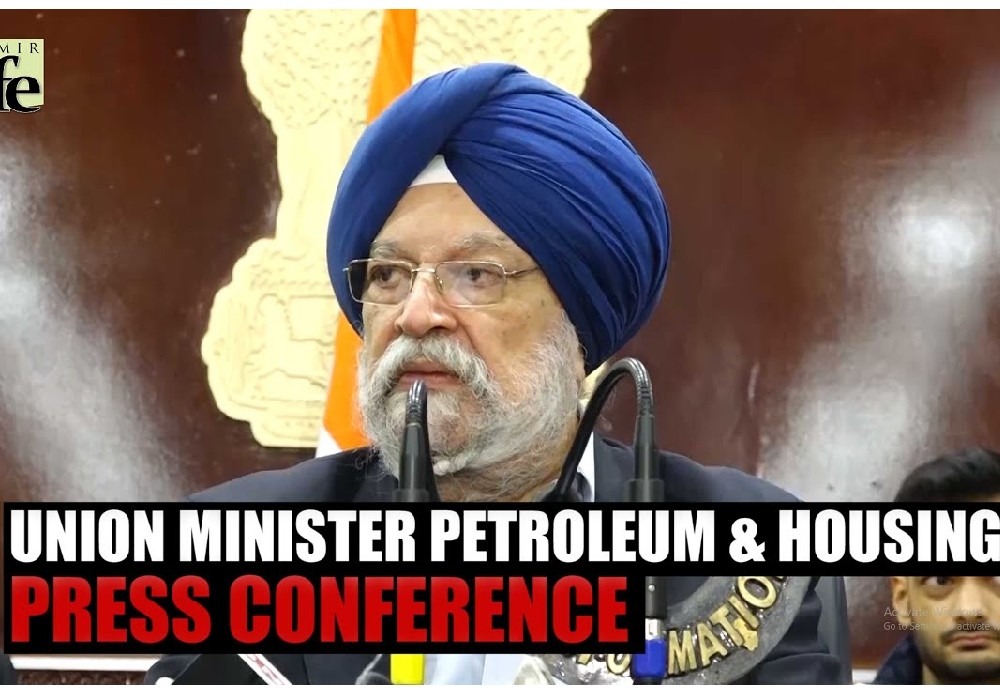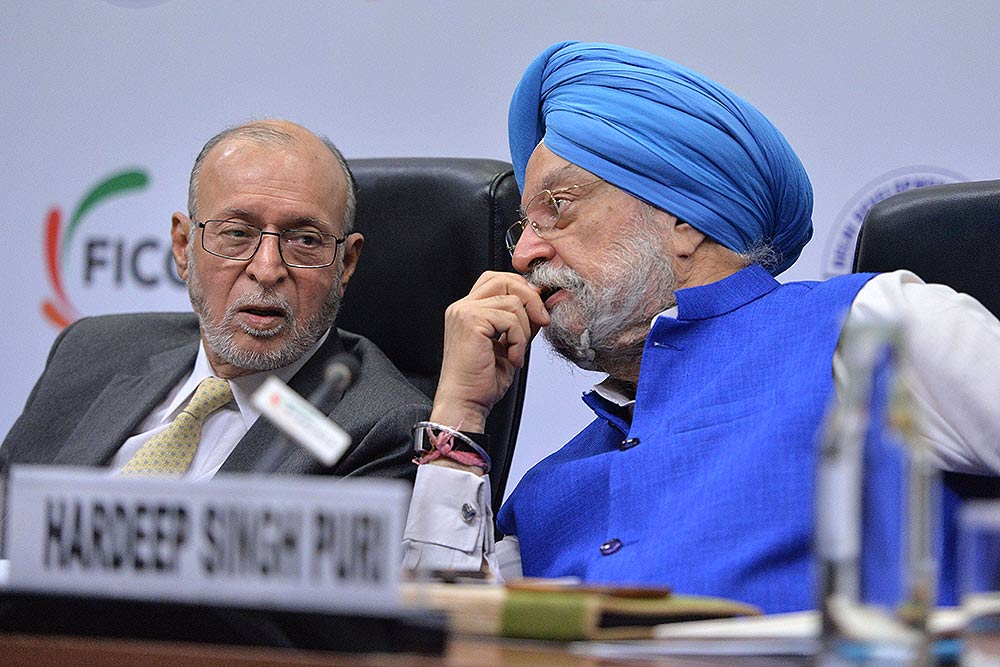The Russia-Ukraine war and subsequent weaponization of energy systems has yet again highlighted the importance of reducing dependence on foreign players for oil and gas supplies and increasing domestic capacities. Prime Minister Narendra Modi had set a target in 2015 to reduce import dependency by at least 10 per cent by 2022. However, the country’s dependence on oil imports has been continuously increasing from 78.5 per cent in 2014-15, to 85 per cent in 2020-21. Further, India also imports 54.3 per cent of its natural gas consumption. This not only threatens the stability of our exchequer but also leaves us at the mercy of a volatile geopolitical environment. Today, more than ever, after two years of pandemic driven uncertainty coupled with a precarious war – it is essential for us to reimagine and realign our energy vision for India.
At the World Energy Policy Summit 2022, Minister of Petroleum & Natural Gas Hardeep Singh Puri emphasised that India will continue to rely on hydrocarbons to meet its expanding energy needs in the foreseeable future. Duly, he also highlighted the government’s plans to double the area under exploration and production.
As the world’s third-largest energy consumer, India’s energy security is critically hinged on the oil and gas sector. This is unlikely to change in the immediate future as alternate energy solutions will take several years to become mainstream. Crude oil is particularly important in view of its crucial role in transportation by road, sea, and air. Natural gas is increasingly being utilised for industries such as power, fertilisers, and petrochemicals. With the government’s vision to progress India into a gas-based economy, natural gas – which occupies a 6 per cent market share in the current domestic energy mix – is envisaged to reach a level of 15 per does not lack resources – we have only lagged in pacing exploration and production of fossil fuels, leading to our import dependency. Creating an enabling atmosphere here will be a critical step towards the country achieving energy autonomy.
The journey from exploration, discovery, development and then production is a long, complex but rewarding exercise. The exploration of oil and gas can broadly be classified into three categories – new exploration for yet-to-find (YTF) potential; exploration in contiguous areas or mining lease areas to locate new additional oil and gas in the vicinity of old fields; and exploration of unconventional resources such as shale oil and gas, and Coal Bed Methane (CBM).
New Exploration for YTF potential is key to reducing our massive import dependency. For this, the idle, unmonetized resources need to be monetised. India’s prognosticated conventional hydrocarbon resource potential is estimated at around 42 BToe (unrisked) of which nearly 28 per cent (12 BToe) is converted to in-place volume through discoveries. The remaining potential falls in the YTF category which requires aggressive but focussed exploration efforts. Converting even 15 per cent of the undiscovered hydrocarbon resource into discovered inplace volume can reduce import dependency, substantially. To encourage new discoveries, the government has taken many progressive steps in evolving policies with new announcements in HELP, OALP and DSF.
Exploration in contiguous areas or mining lease areas to find new oil and gas in old fields also requires innovation and deployment of new technologies. Significant
numbers of new discoveries happen around existing producing areas – as a direct result of improved understanding of the subsurface from drilled-well and production data, better seismic imaging, re-interpretation, and new geological models. In case a commercial discovery is made, it can be developed quickly by tying back to existing production infrastructure and facilities. This is a common practice globally and must be encouraged in India as well. The relaxation of ring fencing can provide a strong financial incentive to investors, which would be further enhanced by provisions for permitting cost recovery. It will allow access to more reserves, which in the future can generate even greater revenue for the government.
In our country, exploration of unconventional resources largely comprises CBM and Shale. The total CBM resource in the country is estimated at 2600 BCM out of which 296.9 BCM is the established in-place volume [3]. In 2013, ONGC estimated shale gas resources of 187.5 TCF [4] from five sedimentary basins. This is encouraging, especially since the shale revolution had acted as a major boost for the energy sector of the United States and is credited with reducing its dependence on the Middle East, creating large scale-employment and turning it from a historically importing country to a net exporter.
In China too, focussed efforts are being driven towards exploring and developing domestic resources. Similarly, in India, enabling factors and state-of-the-art technology can help us actualize our massive underlying unconventional fuel potential. Enabling factors can include supportive fiscal parameters to subsidize significantly high cost and technical complexity vis-à-vis conventional hydrocarbons, supportive interventions for land acquisition due to higher land requirements, formulation of a sectorspecific Environment Impact Assessment (EIA) manual for sustainable shale exploration, permitting operators to undertake wide-scale pilot projects, etc.
This year’s Economic Survey predicted that crude petroleum prices would be in the range of USD 70-75 per barrel over the course of fiscal year 2022-23. However, Russia’s invasion of Ukraine has undone all such predictions with soaring oil and gas prices – especially as Russia is a critical supplier of natural gas to mainland Europe and exports oil to a large number of global markets. In the last few weeks, oil prices have soared past USD 100 per barrel for the first time in more than seven years. The latest report by the State Bank of India's economic wing says that the government is likely to lose up to INR 1 trillion amid rising oil prices in FY23. While short-term measures to relieve consumers and abate concerns of inflation may be met through reduction in taxation on retail fuel, in the medium-to-long term, efforts need to be made to mitigate ‘imported inflation’ and encourage domestic exploration and production through a more enabling investment climate.
When the government seeks new bidders for residual unexplored acreage in India, the most vigorous participants are likely to be existing players, and any future prospective international players reassured and emboldened by them. While various policy support reforms and interventions have been introduced during the last few years, exploration under the more progressive OALP will begin delivering results in time to come.
The current production comes primarily from New Exploration Licensing Policy (NELP), pre-NELP and nominated acreage. India’s crude oil and natural gas production have been declining since the last decade due to dearth of significantly large discoveries and aging fields requiring enhanced recovery techniques. Various legacy issues still impact these regimes and additional layers of complexity and delays in statutory approvals is fostering an environment of ‘preemptive underinvestment’, where
capital expenditure lags demand. Moreover, taxation, pricing and marketing mechanisms need streamlining – there is a cause to bring oil & gas under the purview of the GST regime. Further, other issues await redressal like lack of import parity in the oil & gas value chain despite high import dependency.
The exploration business is cost-intensive with high economic risk and low rates of success. The average commercial success rate of exploration initiatives globally
stands at about 33 per cent. Nonetheless, since oil & gas is a strategic sector with a strong multiplier effect across the economy, dispensations should be given for
new technology-intensive exploration to enable re-investments and enhanced the long run. Boosting domestic oil and gas capacity to attain self-sufficiency will
be critical for the long-term success of the government’s Aatmanirbhar Bharat initiative.

देश में एक करोड़ यात्री प्रतिदिन कर रहे हैं मेट्रो की सवारी: पुरी ..

Union Minister for Petroleum and Natural Gas and Housing and Urban Affairs, Hardeep Singh Puri addressing a press conference in ..

Joint Press Conference by Shri Hardeep Singh Puri & Dr Sudhanshu Trivedi at BJP HQ| LIVE | ISM MEDIA ..
(3).jpg)
"I wish a speedy recovery to former Prime Minister Dr Manmohan Singh Ji. God grant him good health," Puri wrote. ..